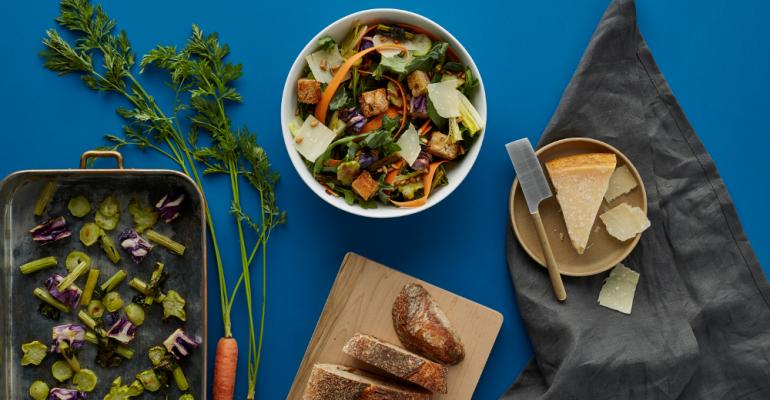Food waste is a growing concern among Americans, and for good reason: More than 30 percent of all food produced in the U.S. is never eaten, according to the USDA. Restaurants have long been careful about waste because it can raise their cost of goods. But now that more consumers are seeing the value of conservation for its own sake, restaurants are leveraging these practices to benefit their reputation. We only see this less wasteful trend growing.
Millennial-friendly salad chain Sweetgreen has been doing that since it debuted in Washington, D.C., in 2007, with found wood from old barns for its tables. Sweetgreen upped its game in 2015 with the wastED salad. The chain teamed up with the wastED project by celebrity chef Dan Barber, who set up a three-week pop-up by that name. Barber sold items priced at $15 a plate made from such detritus as stale bread, fish bones and the fibrous parts of vegetables left behind in juicers.
 21 Greenpoint in Brooklyn, N.Y., serves misshapen vegetables with carrot-top pesto. (Photo by Brittany Ross)
21 Greenpoint in Brooklyn, N.Y., serves misshapen vegetables with carrot-top pesto. (Photo by Brittany Ross)
The Sweetgreen salad had broccoli leaf, romaine heart, carrot ribbon and arugula mix, roasted kale stems, broccoli stalks, cabbage cores, shaved Parmesan, spicy sunflower seeds, croutons and pesto vinaigrette, priced at $8.60.
Other operators have made a whole business out of waste, such as Misfit Juicery, based in Washington, D.C., which repurposes misshapen fruit and vegetables into cold-pressed juice.
In Brooklyn, N.Y., Sean Telo, chef of 21 Greenpoint, has also used misshapen vegetables for a waste-conscious crudités plate dressed in carrot-top pesto. He also runs a Sunday dinner special that uses up the week’s leftovers in a five-course tasting menu priced at $21.
With waste continuing to be top of mind, expect to see more creative uses of things that otherwise would end up in landfills.
Contact Bret Thorn at [email protected]
Follow him on Twitter: @foodwriterdiary






